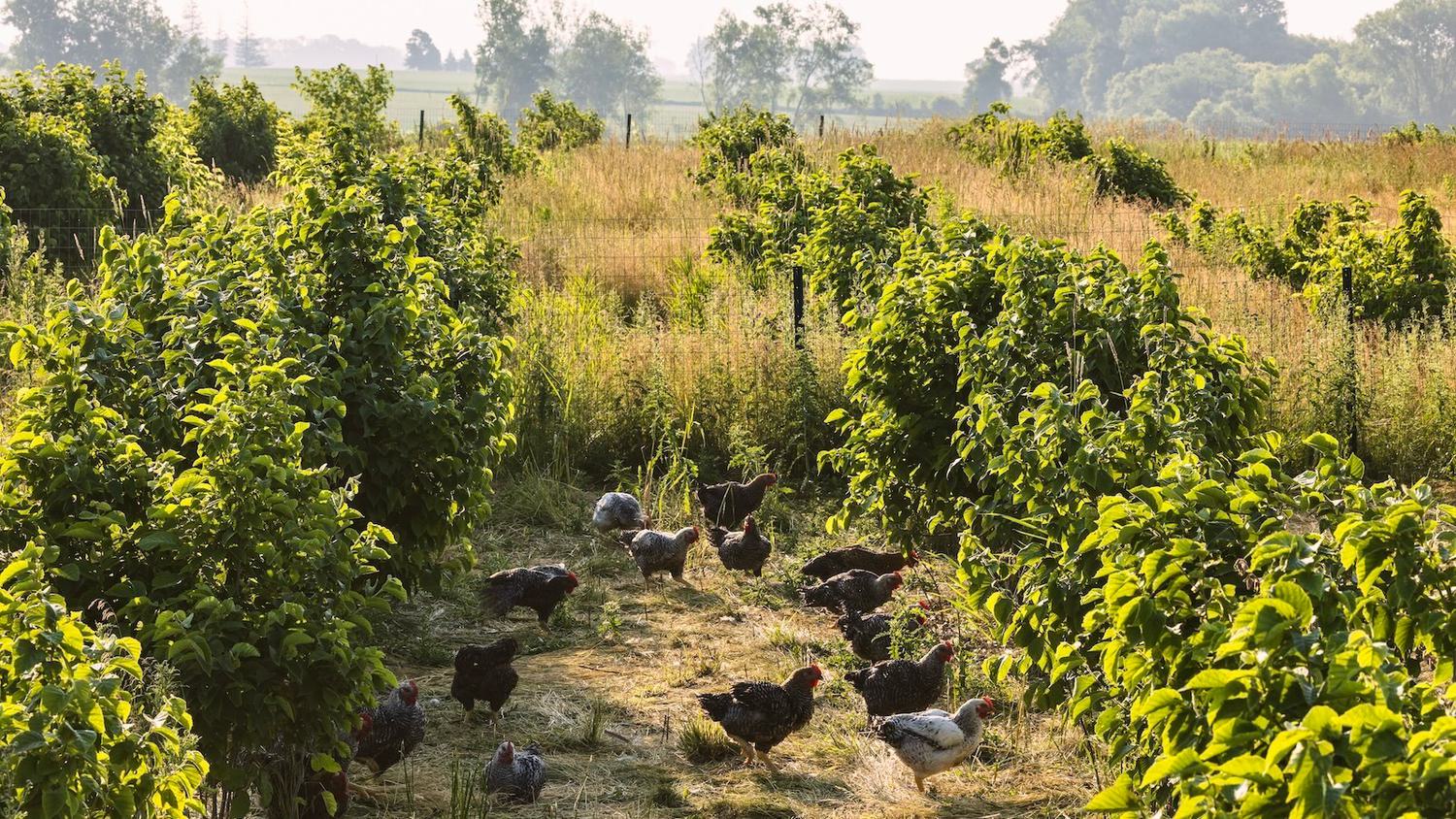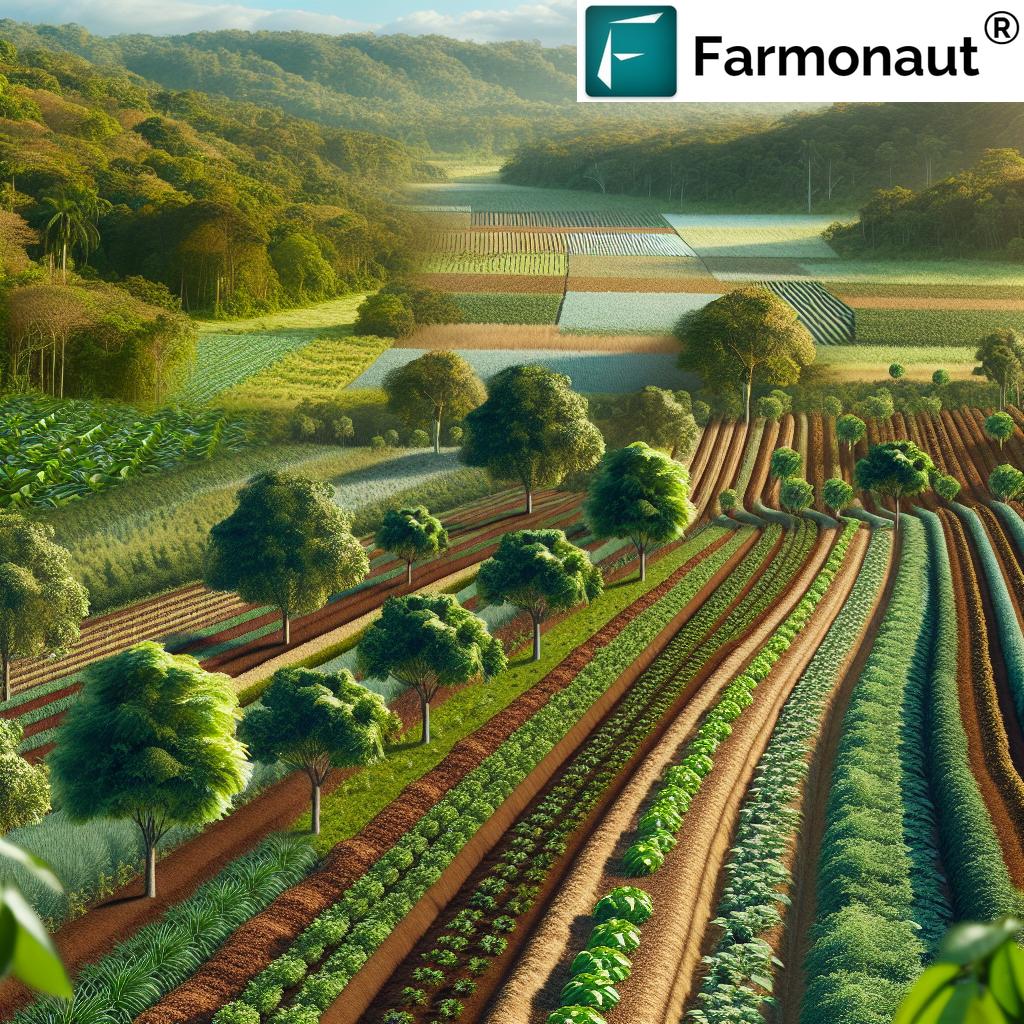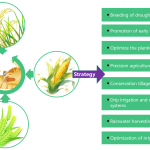Imagine stepping into a world where the lush greenery of trees harmoniously coexists with the vibrant colors of organic crops. This is the enchanting essence of agroforestry.
By blending trees with organic crops, agroforestry offers a sustainable farming approach that not only nurtures the environment but also boosts productivity. Have you ever wondered how your food choices impact the planet? Or how innovative farming techniques can contribute to a healthier ecosystem?
By exploring the fascinating world of agroforestry, you’ll discover how this method can transform the landscape of agriculture. It’s not just about planting trees alongside crops; it’s about creating a symphony where every element plays a crucial role in the health of our planet and your wellbeing. Stay with us, and uncover how agroforestry can offer you not only better food but also a cleaner, greener Earth. Ready to dive deeper into this transformative practice? Let’s explore the benefits and possibilities that agroforestry holds for you and the future of farming.

Benefits Of Agroforestry
Agroforestry is a smart approach that blends trees with crops. It offers numerous benefits to farmers and the environment. This sustainable practice enriches soil, boosts biodiversity, and improves crop yield. By integrating trees, farmers can create a balanced ecosystem. This enhances productivity and resilience against climate change.
Environmental Benefits
Agroforestry helps reduce soil erosion. Trees act as windbreaks, protecting the soil. Their roots hold the soil together, preventing loss. This improves soil fertility and water retention. Trees capture carbon, reducing greenhouse gases. They also provide habitats for wildlife, supporting biodiversity.
Economic Advantages
Farmers enjoy multiple income sources. Trees produce fruits, nuts, and timber. These products can be sold for profit. Diverse crops mean less risk of crop failure. Farmers can earn from both trees and crops. This stability ensures better financial security.
Improved Crop Yield
Trees improve microclimates. They provide shade and shelter for crops. This reduces heat stress and water evaporation. Crops grow healthier and more robust. Nutrient cycling from tree roots enriches the soil. This leads to higher crop yields.
Enhanced Biodiversity
Agroforestry supports diverse plant and animal life. Trees attract birds and insects. These creatures help pollinate crops. They control pests naturally, reducing chemical use. A rich ecosystem promotes balance. This leads to sustainable farming practices.
Soil Health Improvement
Trees improve soil structure. Their roots enhance aeration and drainage. Organic matter from fallen leaves enriches the soil. This boosts soil fertility and health. Farmers experience better crop growth and quality.
Agroforestry Techniques
Agroforestry combines agriculture and forestry practices. This blend nurtures the land and enriches biodiversity. By integrating trees with crops, farmers create sustainable ecosystems. Agroforestry techniques optimize land use. They offer environmental and economic benefits.
Forest Farming
Forest farming involves growing crops under a tree canopy. It enhances soil fertility and conserves water. Shade-loving plants thrive in this setup. Farmers can grow mushrooms, herbs, and berries. The trees provide shelter and reduce erosion.
Silvopasture
Silvopasture combines trees, forage, and livestock. Animals graze among trees, benefiting from shade and shelter. This technique improves animal welfare. The trees help maintain soil health. Silvopasture increases biodiversity on farms.
Windbreaks
Windbreaks use rows of trees to protect crops. They reduce wind speed and prevent soil erosion. Windbreaks enhance crop yields by creating a stable microclimate. They also offer habitats for wildlife. This technique supports a balanced ecosystem.
Riparian Buffers
Riparian buffers involve planting trees along waterways. These trees filter runoff and improve water quality. They prevent sedimentation and reduce nutrient leaching. Riparian buffers protect aquatic life. They stabilize stream banks and prevent erosion.
Alley Cropping
Alley cropping integrates rows of trees with crops. Trees provide shade and nutrients to the crops. This technique improves soil structure and fertility. Farmers grow diverse crops in alleys. Alley cropping enhances productivity and sustainability.
Home Gardens
Home gardens blend trees and plants in small spaces. They offer food security and promote biodiversity. Trees provide fruit, nuts, and shelter. Gardens support pollinators and enrich soil health. This technique is ideal for urban and rural settings.
Challenges In Implementation
Agroforestry, blending trees with organic crops, holds immense promise. Yet, it faces various challenges in implementation. These hurdles can hinder its widespread adoption. Understanding them is crucial for success.
Land Availability And Allocation
Farmers often have limited land resources. Allocating space for both trees and crops can be tough. Trees need time to grow and mature. This can delay immediate crop yields. Balancing both requires careful planning.
Initial Costs And Investment
Setting up an agroforestry system involves costs. Purchasing tree saplings and equipment is expensive. Farmers may face financial constraints. Finding affordable solutions becomes essential.
Knowledge And Training
Agroforestry requires specific knowledge. Many farmers lack proper training. Effective implementation demands understanding of both trees and crops. Access to education and resources is vital.
Management And Maintenance
Managing an agroforestry system is complex. It involves more than just planting. Regular maintenance is crucial. This includes pruning and pest control. Farmers must stay committed to its upkeep.
Resistance To Change
Farmers may resist changing traditional practices. Agroforestry is a new concept for many. Convincing them to adopt it can be challenging. Demonstrating its long-term benefits is key.
Market Access And Demand
Farmers need access to markets for their products. Agroforestry products might face lower demand. Ensuring a market for diverse outputs is critical. It affects farmers’ income and motivation.

Future Of Agroforestry
Agroforestry blends trees with organic crops, enriching soil and boosting biodiversity. This sustainable practice improves resilience against climate change, offering a promising future for agriculture. By integrating trees and crops, farmers can enhance productivity while preserving the environment.
The future of agroforestry is bright and full of potential. With the increasing need for sustainable farming practices, agroforestry is emerging as a key player. It blends trees with crops, offering a unique solution to some of agriculture’s biggest challenges. Agroforestry is not just about planting trees. It’s about creating a symbiotic relationship between trees and crops. This approach can lead to healthier soil, better yields, and more resilient ecosystems. But what does the future hold for this innovative farming method?The Role Of Technology In Agroforestry
Technology is shaping the future of agroforestry in exciting ways. Drones and satellites are being used to monitor tree growth and crop health. These tools provide farmers with real-time data, helping them make informed decisions. Imagine using an app to track the growth of your trees and crops. This is becoming a reality, making agroforestry more efficient and accessible. How will you use technology to enhance your farming practices?Climate Change And Agroforestry
Agroforestry can play a significant role in combating climate change. Trees absorb carbon dioxide, reducing greenhouse gases in the atmosphere. They also offer shade, reducing the need for irrigation and helping crops withstand heat. In a world grappling with climate change, can you afford not to consider agroforestry? By planting trees alongside crops, you’re not just improving your farm. You’re contributing to a healthier planet.Economic Benefits Of Agroforestry
Agroforestry is not just good for the environment; it’s also good for your wallet. Trees can provide additional income streams through timber, fruits, and nuts. This diversifies your farm’s income and reduces financial risks. Think about the potential of harvesting fruits or nuts from trees while also growing organic crops beneath them. This dual approach can lead to greater economic stability. Are you ready to explore these financial opportunities?Community And Agroforestry
Agroforestry has the power to bring communities together. By working collaboratively, farmers can share resources and knowledge. This can lead to better practices and stronger community ties. In many areas, community-led agroforestry projects have shown remarkable success. They not only improve local environments but also foster a sense of unity. How can you engage your community in agroforestry initiatives? Agroforestry is more than just a farming technique; it’s a pathway to a sustainable and prosperous future. By integrating trees and crops, you’re investing in the health of your land and community. Are you ready to be part of the future of farming?
Conclusion
Agroforestry offers a sustainable way to grow crops. Trees and plants work together. This method conserves soil and water. It supports biodiversity and reduces erosion. Farmers can enjoy healthy yields. The environment benefits too. Agroforestry practices help balance nature. Planting trees with crops is effective.
It makes farming eco-friendly and productive. Communities gain from healthier landscapes. Agroforestry is a smart choice for the future. It blends tradition with modern farming needs. Embracing this approach can lead to greener fields. Healthier harvests await those who adopt it.
It brings harmony to agriculture.


